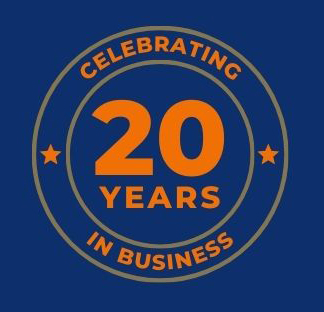Is the financial services industry doing enough to attract and retain top female talent?
- 23 Aug 2017
T+O+M Executive director, Grant Movsowitz, reflects upon what progress has been made to close the gender gap in Australia’s financial services industry over the past six years. Grant also shares his thoughts on how to address this important issue
As we at T+O+M executive take the opportunity to acknowledge the important role of women in the workplace on International Women’s Day, I reflected upon a piece I wrote in 2011 on diversity in the workplace, and specifically what banks were doing to encourage more women in senior executive roles.
At the time, there had been a decade of lip-service about the topic, with nowhere near enough support at CEO level. Australian Banks had been better than their industry counterparts when it came to employing women in executive positions - 13% compared to 8% in the country more generally. This was still well behind leading countries in gender equality, such as Sweden and Norway.
Some drastic measures were put in place to increase these numbers, partly driven by new stock exchange guidelines that came into force in January 2011. Under the rules, all listed companies were obliged to set gender diversity targets for their workforce and report annually on their progress
In September 2010, the Commonwealth Bank of Australia (CBA) put in place gender targets to more than double the number of females in management positions to 40%. Westpac followed suit the next month.
Like any sounds business objective, it is one thing having a policy in place, but quite another putting it into practice.
Six years on, the financial services industry has made significant progress towards closing the gender gap, with 37.8% of management positions now held by women in banking and financial services in Australia , while 28.5% of key management personnel (across all industries) in Australia are women .
Today, 44% of all management roles at CBA are held by women; there is a 50:50 split between men and women on its Executive Committee; and the CBA chair is a woman – Catherine Livingstone took over as chair of its board in January. At Westpac, 46% of leadership roles are now held by women .
It is fantastic that such significant progress has been made, but I think there are still 7 inherent problems forming barriers for women in the workplace, that aren’t reflected in these statistics:
- Many women need to combine work and domestic responsibilities, more so than men
- Dominant business models equate leadership with constant availability, and mobility from a geography perspective – ‘no questions asked’
- Model presupposes a linear career path with no space for career breaks or desires to stay in one geographical location
- Women don’t naturally assert themselves or promote themselves compared to their male counterparts – women tend to rate their performance as on par with their peers, while men tend to rate their performance superior to their peers
- It appears harder for women to find a mentor
- Many women ‘opt out’ – voluntarily deciding to leave the workforce due to a combination of the above issues
- Equal pay for men and women in similar positions is still an issue
The debate rages on – our teams are still measured on the number of ‘diversity’ candidates placed and some organisations are still interested in seeing a certain number of female candidates on shortlists.
So, the question remains whether the financial services industry is doing enough in terms of taking a ‘holistic’ approach to retaining high calibre female talent and nurturing them whilst they navigate through challenges that, in some cases, are unique to them?
For example, are you:
- Doing enough to bring more high calibre females into the organisation at the graduate/more junior levels?
- Every financial services (and other) business is competing for the same finite talent pool – are you selling flexibility the right way? The pitch needs to be strong and consistent across the board – banks need to careful of how it is sold – mentioning specific gender targets gets very polarised reactions
- Including high calibre females on interview panels in order to demonstrate its positive attitude towards diversity early in the hiring process?
- Employing a mentoring system – coaching, network-building, mentoring
- Only recruiting senior external management into the business? – ‘grass roots’ initiatives have to happen simultaneously (flexible working hours, career flexibility)
- Creating more supportive social environments: childcare facilities, family support, family subsidies, equal pay, equal hours, equal responsibilities
- Developing a ‘Keep in touch’ program so women are able be kept informed of company happenings whilst they are raising a family
- Understanding which job functions are more male dominated than others? These include corporate finance, M&A and finance
Can any organisation say they have nailed it?
I would love to hear some positive stories from woman and men that have felt truly supported, thus upping their loyalty and retention.
And, to the contrary, do men feel there is gender prejudice now at senior levels?
Australia’s Gender Equality Scorecard – Workplace Gender Equality Agency, November 2016
2 Australia’s Gender Equality Scorecard - Workplace Gender Equality Agency, November 2016
3 Source: Westpac.com.au 8/3/1

